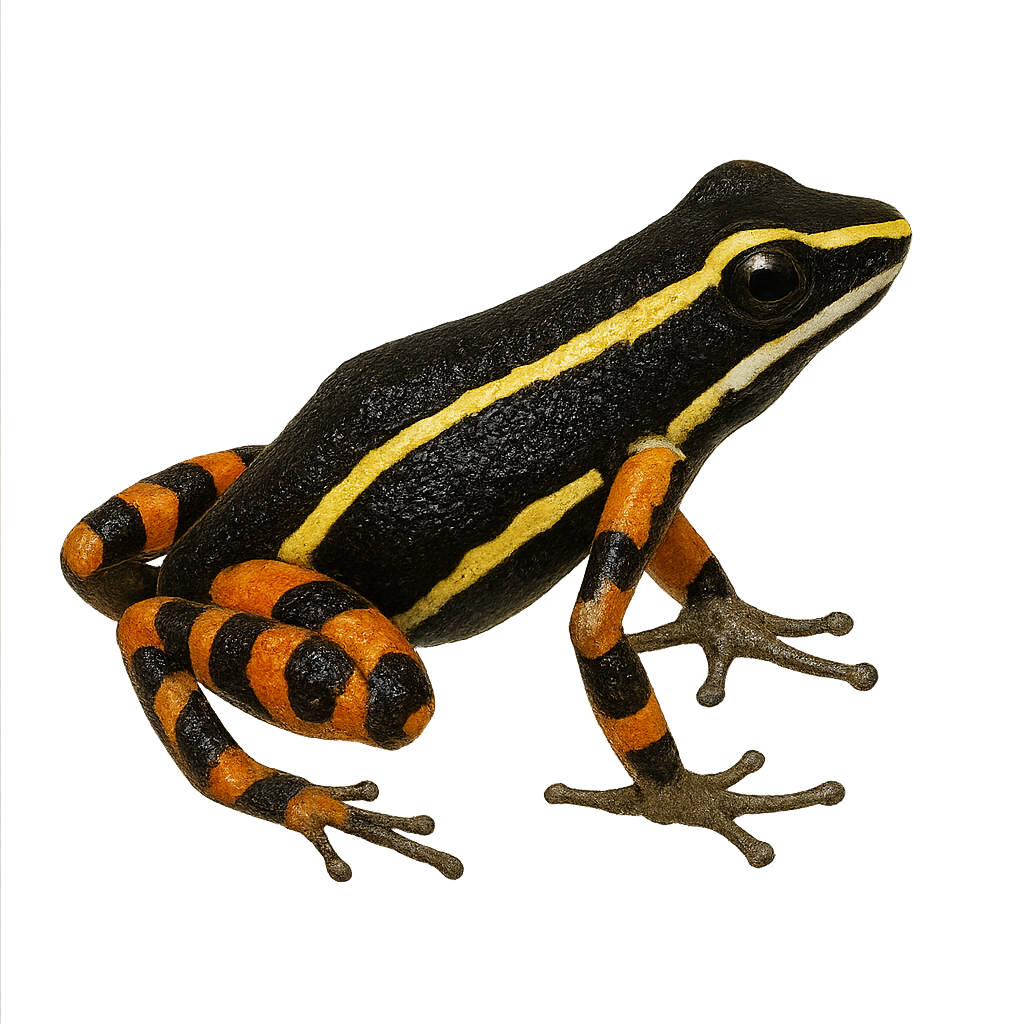Your wildlife photography guide.
Explore the ameerega braccata in detail, study its behavior, prepare your shots.
Where to observe and photograph the ameerega braccata in the wild
Learn where and when to spot the ameerega braccata in the wild, how to identify the species based on distinctive features, and what natural environments it inhabits. The WildlifePhotographer app offers tailored photography tips that reflect the ameerega braccata’s behavior, helping you capture better wildlife images. Explore the full species profile for key information including description, habitat, active periods, and approach techniques.
Ameerega braccata
Scientific name: Ameerega braccata

IUCN Status: Least Concern
Family: DENDROBATIDAE
Group: Amphibians
Sensitivity to human approach: Suspicious
Minimum approach distance: 2 m
Reproduction period: November to December
Incubation: 10–14 jours
Births: December to January
Habitat:
Tropical forests, humid undergrowth, riparian zones
Activity period :
Primarily active during the day, with peak activity in the morning and late afternoon.
Identification and description:
The Ameerega braccata is a captivating species belonging to the Dendrobatidae family. Native to the tropical rainforests of South America, it is renowned for its vibrant colors and intriguing behavior. This diurnal species thrives in humid environments, such as undergrowth and areas near water bodies, and primarily feeds on small insects and invertebrates. Although its conservation status is not currently alarming, deforestation and habitat loss pose potential threats. Reproduction typically occurs during the rainy season when conditions are optimal for tadpole development.
Recommended lens:
Macro – adjust based on distance, desired framing (portrait or habitat), and approach conditions.
Photography tips:
To photograph the Ameerega braccata, opt for a discreet and patient approach. Use a macro lens to capture the details of its colorful skin. Early morning or late afternoon provides soft lighting ideal for highlighting its vibrant colors. Maintain a safe distance of 2 m to avoid disturbing it. Consider using a tripod to stabilize your camera and achieve sharp images, especially in undergrowth where light may be limited. Be attentive to movements and sounds to spot this often discreet frog in its natural habitat.
The WildlifePhotographer App is coming soon!
Be the first to explore the best nature spots, track rutting seasons, log your observations, and observe more wildlife.
Already 1 430 wildlife lovers subscribed worldwide

